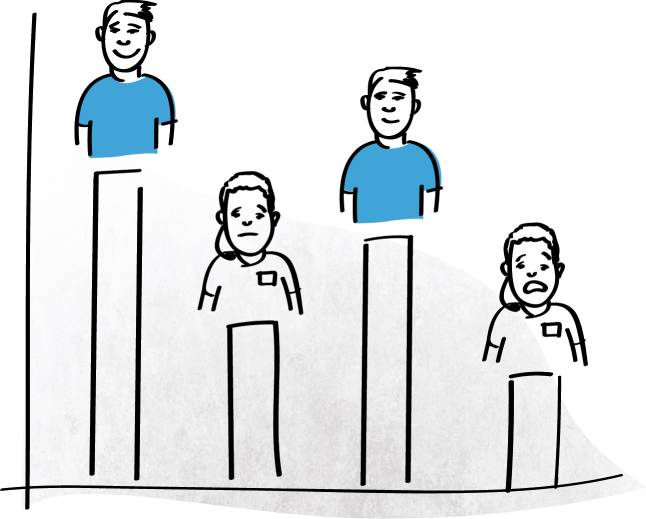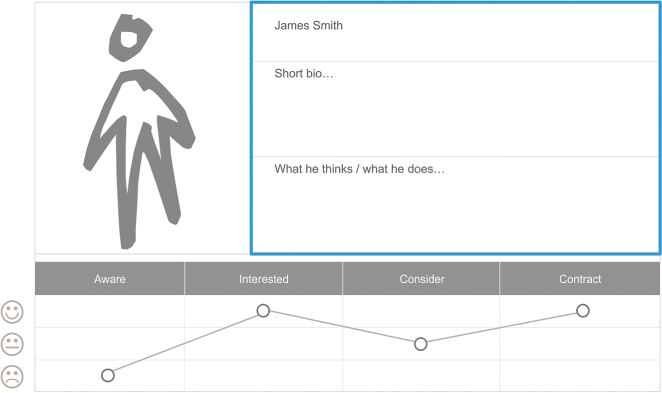Chapter 6Tools

Throughout this book we discuss how to use various tools to tackle business challenges. In this section we explain the most frequently used tools in more detail. For more service design tools, visit www.liveworkstudio.com/SDforB
Customer Profiles

Businesses have to design their operations to deliver to thousands of customers. To do this they standardize and create processes and operations that enable efficient delivery for many customers. Much market research follows this same pattern by analyzing customers in the thousands to define a market size or put a number to a qualitative factor such as desirability. However, this focus can cause the business to lose touch with customers as human beings, who they need to be able to relate to as individuals. We also need insight into the experiences and motivations of individual people.
A core tool to counter this effect is the customer profile. A customer profile is a simple portrait of an individual customer (B2C or B2B) that brings the customers—with their specific context needs and experiences—into discussions within the business. Profiles differ from a lot of research and insight, as they do not pretend to be comprehensive; rather, they are specific to a customer and the truth of that customer's experience and needs. ...
Get Service Design for Business now with the O’Reilly learning platform.
O’Reilly members experience books, live events, courses curated by job role, and more from O’Reilly and nearly 200 top publishers.

